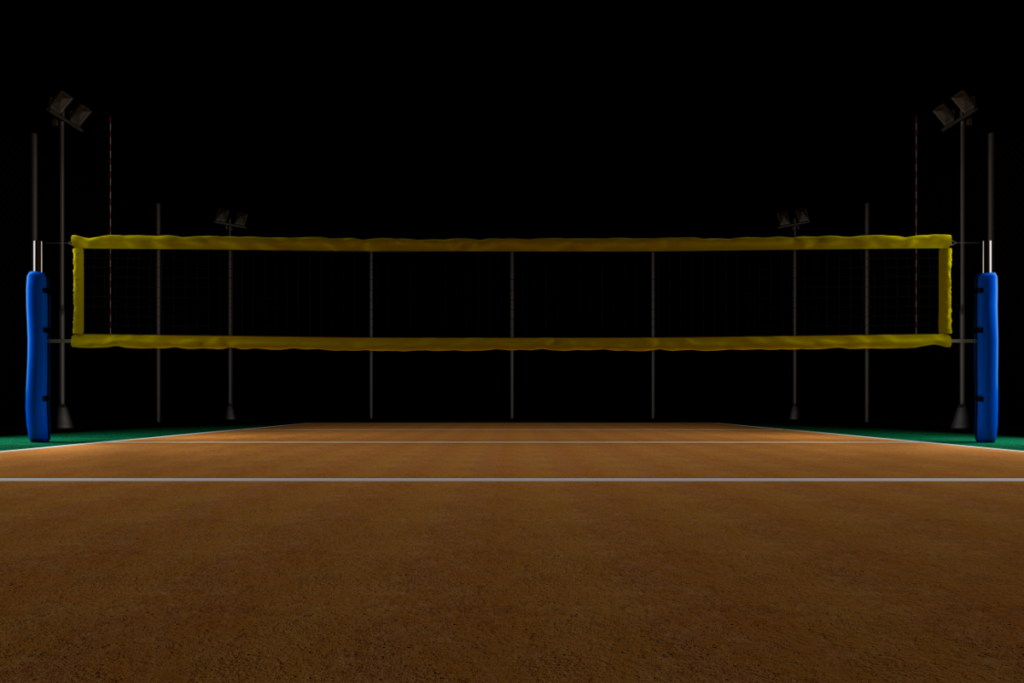Karch Kiraly, the legendary USA volleyball coach, led the women’s national team to three Olympic gold medals (2012, 2016, 2020).
His slogan — is “One point at a time, one set at a time”.
Under this guidance, players like Foluke Akinradewo, Jordan Larson, and Paige Tapp became unstoppable forces on the court.
As per Kiraly’s legacy:
- It’s important to stay alive in a match, even though you’re down in sets.
- Shows how adapting strategy between sets can lead to success.
- It highlights the value of teamwork, determination, and a never-give-up attitude.
I also follow the same technique in my gameplay. If I am down in one set, I focus on the next set, replacing my anxiety and nervousness with clarity and confidence. This slogan can change everything as it did for me.
The “sets” are crucial in volleyball and winning them requires:
- Focus
- Strategy
- Resilience
- Clutch performance
- Teamwork
- Adaptability
Here’s a simplified guide to help you understand the “sets” concept in volleyball:
What is a Set?
In volleyball, a set is a match segment played to a specific point total. To win a set, a team must reach the required points with at least a minimum lead of two points.
It’s like a mini-game within the bigger game.
Types of Volleyball Sets
There are two primary types of sets in volleyball:
Standard Set – Played to 25 points sets (must win by 2 points).
Tiebreaker Set – Played to 15 points set (must win by 2 points).

Basic Rules
- Set Changeover – Teams switch sides after each set, except the 5th set where they switch when one team reaches 8 points.
- Point Scoring – A point is scored when the opponent fails to return the ball or makes an error.Rally Scoring – Point-per-rally (PPR) scoring system, where a point is scored by the team that wins each rally.
- Set Point – When you can win the set with the next point.
- Match Point – When you can win the match in full with the next point.
Matches based on competition level and format
Recreational / Youth Leagues
- Local Leagues: 2- 3 sets per match.
- School Tournaments: 2-3 sets per match.
- Community centers: 2-3 sets per match.
Club Volleyball – Youth / Teenagers
- Regional Tournaments: 3-4 sets per match.
- National Championship: 3-4 sets per match.
High School Volleyball
- Regular season matches: 3-4 sets per match.
- State Championship: 3-5 sets per match.
College Volleyball – NCAA
- Regular season matches: 3-5 sets per match.
- Conference Championships: 3-5 sets per match.
- NCAA championships: 3-5 sets per match.
Professional Volleyball
- International competitions (FIVB): 3-5 sets per match.
- Olympic Games: 3-5 sets per match.
- Pro leagues (AVP, Premier Volleyball League, and more): 3-5 sets per match.
- Beach Volleyball World Championships: 3-5 sets per match.
Understanding the Game Formats
Best of 3 sets
- Two teams compete.
- The first team to win 2 sets wins the match.
- Each set is played at 25 points, with a minimum 2-point lead.
- If the score is 24-24, play continues until one team leads by 2 points.
Best of 5 sets
- Two teams compete.
- The first team to win 3 sets wins the match.
- Sets 1-4 are played to 25 points, with a minimum 2-point lead.
- Set 5 (Tiebreaker) is played to 15 points, with a minimum 2-point lead.
Round-Robin/Pool Play Format
- Teams compete in a group stage.
- Each match is best of 3 or 5 sets.
- Teams earn points for wins and losses.
- Top teams advance to playoffs.
Single-Elimination Bracket
- Teams compete in a knockout format.
- Each match is best of 3 or 5 sets.
- The winner advances to the next round.
- The loser is eliminated from the competition.
Double-Elimination Bracket
- Each match is best of 3 or 5 sets.
- Teams are eliminated after 2 losses.
- Winners advance to the next round.
- Teams compete in a knockout format.
Set Objectives
- Score more points than the opponent by hitting the ball over the net and making it land on their court.
- Prevent the opponent from scoring by blocking or defending the ball.
- Win sets and ultimately, the match.
Role of volleyball sets
- Game Structure – Organizing the game into manageable segments.
- Strategic shifts – Allowing coaches to adjust tactics and player rotations.
- Momentum builder – winning sets boost team morale and energy.
- Score Management – Simplifying scorekeeping and focusing teams on setting specific goals.
- Physical break – Providing necessary rest and recovery time for players.
Till here we have learned a lot about sets and I am confident enough that you got it right. Let’s discuss a few strategies that can help you win these smaller sets to make a big difference.
Offensive Strategies
- Strong serving – Use different types of serves (float, topspin, jump) to disrupt your opponent’s reception.
- Smart setting – Set to hitters in optimal positions, to take advantage of opponent’s weaknesses.
- Hitter placement – Place hitters in positions to attack weak points in the opponent’s defense.
- Quick attacks – Use a fast tempo to catch opponents off guard.
- Combination play – Play in combination( for example: slide, cross) to confuse opponents.
Defensive Strategies
- Effective Blocking – Position blockers to shut down the opponent’s primary attackers.
- Defensive Alignment – Align the defender to counter the opponent’s attacking tendencies.
- Digging and coverage – Position diggers to cover the opponent’s attacks.
- Communication – Communicate to coordinate defensive efforts.
- Transition Defense – Quickly switch over from offense to defense.
Set-Specific Strategies
- Early Set leads – Establish a strong lead to put pressure on opponents.
- Comebacks – Adjust strategy to overcome deficits.
- Tiebreaker Sets – Focus on executing fundamental skills under pressure.
- Closing Out sets – Maintain intensity and focus to secure set wins.
- Dominant sets – One team wins by a large margin.
Tactical Decisions
- Identify Opponent’s Weaknesses – Utilize the opponent’s weaknesses (for example – poor passing, weak blocking).
- Adjust Serving Strategy – Change or adjust serving strategy based on the opponent’s receive.
- Change Hitting Options – Different hitting options (for example – line, cross, tip) to keep opponents guessing.
- Substitutions – Make strategic substitutions to distract the opponent’s rhythm.
- Time-Outs – Use time-outs to regroup, adjust strategy, or disturb the opponent’s momentum.
Volleyball sets form the foundation of a match. Teams face off in several sets, each demanding strategic play and skill. By understanding the structure and types of sets, players and spectators can better appreciate the game’s complexity and excitement.

